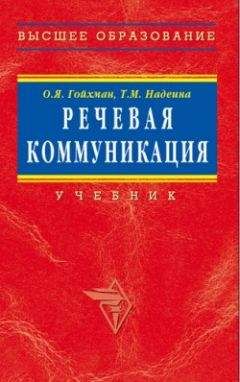Ричард Харрис - Психология массовых коммуникаций
Заключение
Всё это снова приводит нас к вопросу: «Зачем изучать психологию, в особенности когнитивную психологию СМИ?». В сущности, масс-медиа предлагают нам опыт, который возникает в результате взаимодействия нашего сознания с содержанием СМИ. СМИ воздействуют на наше сознание: они дают нам идеи, изменяют наши установки, рассказывают, что собой представляет окружающий нас мир. Эти построения в нашем сознании (то есть наша воспринимаемая реальность) превращаются в каркас, на основе которого мы создаём интерпретации нашего опыта в целом. Таким образом, чтение газет, просмотр телепередач, прослушивание музыки и радиопередач – всё это по большей части когнитивные феномены.
В каком-то смысле продукция СМИ – это искусство, творческая выдумка. Но как когда-то сказал Пикассо: «Искусство – это ложь, сквозь которую мы видим правду». То же самое верно и применительно ко СМИ. Участие в создании передачи – это игра, говорил Оскар Уальд: «Я люблю игру актёров. Она намного реальнее жизни».
То же мы могли бы сказать и о СМИ. Жизнь подражает искусству, искусство подражает жизни. В конце концов, становится трудно отличить одно от другого.
--------------------------------------------------------------------------------
[1] Определённый артикль делает предмет или существо, о котором идёт речь, более конкретным, похоже на местоимение «тот» в русском языке. (Прим перев.)
[2] Слоган основывается на игре слов: клубный коктейль «club cocktail» (англ.) и дубинка «club» (англ.). (Прим. перев.)
[3] Listservers – компьютерная программа, организующая списки электронных подписчиков.
[4] Usenet – этот термин появился в 1980 году и обозначает систему on-line, в которой происходят дискуссии групп-участников.
[5] Intifada – арабское слово, обозначающее восстание; имеется в виду начавшаяся в конце 1987 года борьба палестинцев на оккупированных Израилем территориях Западного Берега реки Иордан и в секторе Газа.
Библиография
Abel, E. (1984). Television in international conflict. In: A. Arno W. Dissayanake (Eds.). The news media and national and international conflict (p. 63–70). Boulder , CO : Westview Press.
Abelman, R. (1989). From here to eternity: Children's acquisition of understanding of projective size on television. Human Communications Research, 15, 463–181.
Aberncthy, A. M. (1992). The information content of newspaper advertising. Journal of Current Issues and Research in Advertising, 14(2):, 63–68.
Abramson. P. R., Hayashi, H. (1984). Pornography in Japan : Cross-cultural and theoretical considerations. In: N. M. Malamuth E. Donnerstein (Eds.). Pornography and sexual aggression (p. 173–183). Orlando . FL: Academic Press.
Abramson. P. R., Perry, L, Seeley, T. Seeley, D., Rothblatt, A. (1981). Thermographie measurement of sexual arousal: A discriminant validity analysis. Archives of Sexual Behavior, 70(2), 175–176.
Ahn, W.-K., Brewer, W. F., Mooney. R. J. (1992). Schema acquisition from a single example. Journal of Experimental Psychology: Learning, Memory, and Cognition. 18, 391–412.
Alali, A. O., Eke, К . К . (Eds.). (1991). Media coverage of terrorism: Methods of diffusion. Newbury Park , CA : Sage.
Alesandrini. K. L. (1983). Strategies that influence memory for advertising communications. In: R. J. Harris (Ed.). Informationprocessing research in advertising (p. 65–82). Hillsdale , NJ : Lawrence Eribaum Associates.
Alien, M., D'Alcssio, D., Brezgel, K. (1995). A meta-analysis summarizing the effects of pornography II: Aggression after exposure. Human Communication Research, 22, 258–283.
Alien, M., Emmers, Т ., Gebhardt, L., Giery, M.A. (1995). Exposure to pornography and acceptance of rape myths. Journal of Communication, 45(1), 5–26.
Alsop, R. (1988, January 26). Advertisers retreat from making direct pitch to the gay market. Wall Street Journal, p. 33.
Altheide, D. L. (1976). Creating reality: How TV news distorts events. Beverly Hills, CA: Sage. Alvarado. M., Gutch, R., Wollen, T. (1987). Learning the media: An introduction to media teaching. London: Macmillan.
Alwitt, L. R, Deighton, J., Grimm, J. (1991). Reactions to political advertising depend on the nature of the voter-candidate bond. In: F. Biocca (Ed.). Television and political advertising: Vol. I. Psychological processes (p. 329–350). Hillsdale, NJ: Lawrence Eribaum Associates.
Amador. O. G. (1988). Latin lovers. Lolita, and La-Bamba. Americas, 40(4), 2–9.
Amaral. R., Guimaraes, C. (1994). Media monopoly in Brazil. Journal of Communication, 44(4). 26–38. Andersen. P. A., Kibler. R. J. (1978). Candidate valence as a predictor of voter preference. Human Communication Research, 5, 4–14.
Anderson, D. R. (1985). On-line cognitive processing of television. In: L. F. Alwitt A. A. Mitchell (Eds.). Psychological processes and advertising effects (p. 177–199). Hillsdale, NJ: Lawrence Eribaum Associates.
Anderson, D. R. (1998). Educational television is not an oxymoron. The Annals of the American Academy of Political and Social Science, 557, 24–38.
Anderson, D. R., Burns, J. (1991). Paying attention to television. In: J. Bryant D. Zillmann (Eds.). Responding to the screen: Reception and reaction processes (p. 3–25). Hillsdale, NJ: Lawrence Eribaum Associates.
Anderson. D. R., Field, D. E. (1991). On-line and off-line assessment of the lelevision audience. In: J. Bryant D. Zillmann (Eds.). Responding to the screen: Reception and reaction processes (p. 199–216). Hillsdale, NJ: Lawrence Eribaum Associates.
Andreasen, M. S. (1994). Patterns of family life and television consumption from 1945 to the 1990s. In: D. Zillmann, J. Bryant, A. C. Huston (Eds.). Media, children, and the family: Social scientific, psychodynamic, and clinical perspectives (p. 19–36). Hillsdale NJ: Lawrence Eribaum Associates.
Apter, M. J. (1982). The experience of motivation: The theory of psychological reversals. San Diego, CA: Academic Press.
Arias, M. B. (1982). Educational television: Impact on the socialization of the Hispanic child. In: G. L. Berry C. Mitchell-Kernan (Eds.). Television and the socialization of the minority child (p. 203–211). New York: Academic Press.
Arms, R. L., Russell, G. W, Sandilands. M. L. (1979). Effects on the hostility of spectators of viewing aggressive sports. Social Psychology Quarterly, 42, 275–279.
Armstrong, G. В ., Neuendorf; K. A., Brentar, J. E. (1992). TV entertainment, news, and racial perceptions of college students. Journal of Communication, 42(3), 153–176.
Assman, H. (1987 a). La iglesia electronica у su impacto en America latina (The electronic church and its impact in Latin America). San Jose, Costa Rica: DEI. Assman, H. (1987 b). Phenomenal growth of sects, electronic church related to continent's poverty. Latin America Press, 19(16), 5–6.
Atkin, C., Arkin, E. B. (1990). Issues and initiatives in communicating health information. In: C. Atkin L. Wallack (Eds.). Mass communication and public health (p. 13–40). Newbury Park, CA: Sage.
Atkin, C., Greenberg, В ., McDermott, S. (1983). Television and race role socialization. Journalism Quarierly, 60(3), 407–114.
Austin, E. W., Roberts, D. F., Nass, C. I. (1990). Influences of family communication in children's television-interpretation processes. Communication Research, 17, 545–564.
Bacchetta, V (1987). Brazil's soap operas: ''Huge dramas where the country portrays itself. Latinamerica Press. 19(9), 5–6.
Bachen, С . М . (1998). Channel One and the education of American youths. The Annals of the American Academy of Political and Social Science, 557, 132–147.
Bachy, V. (1976). Danish "permissiveness" revisited. Journal of Communication, 26, 40–43.
Backer, T. E., Rogers, E. M., Sopory, P. (1992). Designing health communication campaigns: What works? Newbury Park, CA: Sage.
Baggaley, J. P. (1988). Perceived effectiveness of interactional AIDS campaigns. Health Education Research: Theory and Practice, 3, 1–17.
Baggett, P. (1979). Structurally equivalent stories in movie and text and the effect of the medium on recall. Journal of Verbal Learning and Verbal Behavior, IS, 333–356.
Bald, M. (1998, May). Africa's wonderchild. World Press Review, 45, p. 22.
Ball, S., Bogatz., G. A. (1970). The first year of Sesame Street: An evaluation. Princeton, NJ: Educational Testing Service.
Bancroft, J., Mathews, A. (1971). Autonomic correlates of penile erection. Journal of Psychosomatic Research, 15, 159–167.
Bandura, A. (1977). Social learning theory. Englewood Cliffs, NJ: Prentice-Hall.
Bandura, A., Ross, D., Ross, S. A. (1961). Transmission of aggression through imitation of aggressive models. Journal of Abnormal and Social Psychology, 63, 575–582.
Bandura, A., Ross, D., Ross, S. A. (1963). Imitation of film-mediated aggressive models. Journal of Abnormal and Social Psychology, 66, 3–11 Bandura, A., Walters. R. H. (1963). Social learning and personality development. New York: Holt, Rinehart Winston.
Barbaree, H. E., Marshall, W. L., Lanthier, R. D. (1979). Deviant sexual arousal in rapists. Behavior Research and Therapy, 17, 215–222.
Barcus, F. E. (1980). The nature of television advertising to children. In: E. L. Palmer A. Dorr (Eds.). Children and the faces of television: Teaching, violence, and selling (p. 273–285). New York: Academic Press.
Barcus, F. E. (1983). Images of life on children's television. New York: Prager.
Barnett, M. A., Klassen, M., McMinimy, V, Schwarz, L. (1987). The role of self- and other-oriented motivation in the organ donation decision. Advances in Consumer Research, 14, 335–337.
Barnhurst, K. G., Mutz, D. (1997). American journalism and the decline in event-centered reporting. Journal of Communication, 47(4), 27–53.
Baron, R. A. (1979). Heightened sexual arousal and physical aggression: An extension to females. Journal of Research in Personality, 13, 91–102.




